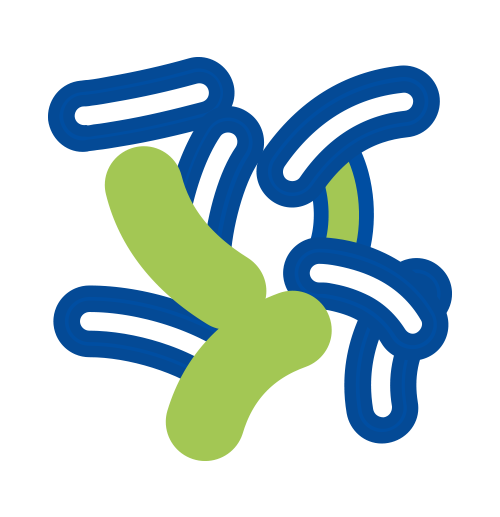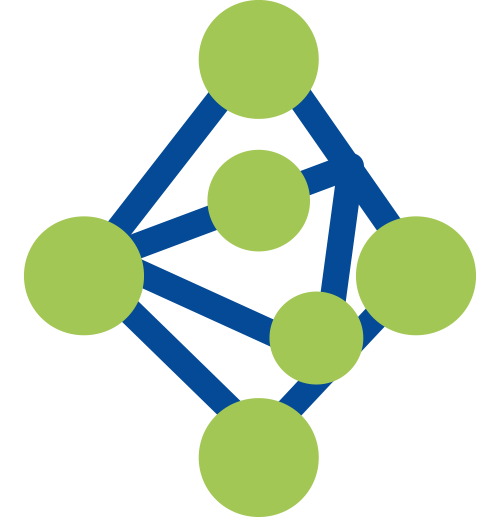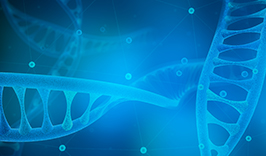In the rapidly advancing field of molecular cytogenetics, Oligo-FISH (Oligonucleotide Fluorescence In Situ Hybridization) has emerged as a revolutionary technique for chromosome painting. This cutting-edge approach enables researchers to visualize and analyze individual chromosomes with unparalleled precision and clarity. As we venture into 2024, let's explore the intricacies of Oligo-FISH and its transformative applications in unraveling the mysteries of chromosomal structure and behavior.
What is Oligo-FISH?
Oligo-FISH is an advanced fluorescence in situ hybridization (FISH) technique that utilizes short, synthetic oligonucleotide probes to target and label specific chromosomal regions or entire chromosomes. Unlike traditional FISH methods that rely on DNA probes derived from cloned sequences or repetitive elements, Oligo-FISH probes are computationally designed and synthesized based on the genome sequence of the organism under study.
These probes, typically ranging from 25 to 60 nucleotides in length, are engineered to hybridize with high specificity to their complementary sequences within the genome. By labeling these probes with fluorescent dyes, researchers can visualize the targeted chromosomal regions or chromosomes under a fluorescence microscope, enabling detailed analysis and characterization.
Oligo Pools:Up to 300 nt and 4.35 million oligos on a single chip with high accuracy and uniformity.
The Power of Oligo-FISH for Chromosome Painting in 2025
Chromosome painting is a powerful technique that allows researchers to identify and distinguish individual chromosomes or chromosomal regions based on their unique fluorescent labeling patterns. Oligo-FISH has revolutionized this process by providing a highly flexible and efficient approach to chromosome painting in 2025.
The Advantages of Oligo-FISH for Chromosome Painting
-
Specificity and Precision: Oligo-FISH probes are designed to target unique sequences within the genome, ensuring high specificity and minimizing cross-hybridization with non-target regions. This precision allows for accurate identification and delineation of individual chromosomes or chromosomal segments.
-
Versatility: Oligo-FISH probes can be designed for any organism with a sequenced genome, making this technique applicable to a wide range of species, including plants, animals, and microorganisms. This versatility opens up new avenues for comparative genomic studies and evolutionary analyses.
-
Multiplexing Capabilities: Multiple sets of Oligo-FISH probes, each labeled with a different fluorescent dye, can be combined in a single experiment. This multiplexing capability enables researchers to simultaneously visualize and distinguish multiple chromosomes or chromosomal regions within the same sample, providing a comprehensive view of the genome organization.
-
High Resolution: Oligo-FISH probes can target specific regions as small as a few kilobases, allowing for the detection of fine-scale chromosomal rearrangements, deletions, or duplications that might be missed by lower-resolution techniques.
-
Reproducibility and Consistency: Unlike traditional FISH probes derived from cloned DNA or repetitive sequences, Oligo-FISH probes are synthesized based on known genomic sequences, ensuring consistent and reproducible results across experiments and laboratories.
-
Rapid Advancements: As genomic sequencing technologies continue to advance and our understanding of genome organization deepens, the applications of Oligo-FISH in chromosome painting will undoubtedly expand, providing researchers with unprecedented insights into the intricate world of chromosomes and their role in shaping the diversity of life on Earth.
Applications of Oligo-FISH in Chromosome Painting in 2024
The versatility and precision of Oligo-FISH have opened up a wide range of applications in chromosome painting, revolutionizing our understanding of chromosomal structure, behavior, and evolution in 2024. Here are some key applications:
-
Karyotyping and Chromosome Identification: Oligo-FISH probes can be designed to target specific chromosomes or chromosomal regions, enabling accurate karyotyping and chromosome identification in various organisms. This is particularly valuable in species with complex or poorly characterized genomes.
-
Detection of Chromosomal Rearrangements: By painting individual chromosomes or chromosomal segments, Oligo-FISH can reveal structural variations, such as translocations, inversions, deletions, or duplications, with high resolution. This information is crucial for understanding the genetic basis of diseases, evolutionary processes, and breeding programs.
-
Comparative Genomic Studies: Oligo-FISH probes designed for one species can often be applied to related species, facilitating comparative genomic analyses and shedding light on chromosomal evolution and speciation events.
-
Meiotic Chromosome Behavior: Oligo-FISH can be used to study the behavior of chromosomes during meiosis, a critical process in sexual reproduction. By painting specific chromosomes or chromosomal regions, researchers can investigate pairing, recombination, and segregation patterns, contributing to our understanding of genetic diversity and inheritance.
-
Three-Dimensional (3D) Genome Organization: When combined with advanced imaging techniques, Oligo-FISH can provide insights into the three-dimensional organization of chromosomes within the nucleus, revealing the spatial relationships between different chromosomal regions and their potential functional implications.
-
Cancer Cytogenetics: In the field of cancer research, Oligo-FISH has proven invaluable for detecting and characterizing chromosomal abnormalities associated with various types of cancers, aiding in diagnosis, prognosis, and treatment strategies.
-
Synthetic Biology and Genome Engineering: With the rapid advancements in synthetic biology and genome engineering, Oligo-FISH has become an indispensable tool for visualizing and validating genetic modifications, such as gene insertions, deletions, or rearrangements, in engineered organisms.
-
Molecular Diagnostics: Oligo-FISH has found applications in molecular diagnostics, enabling the detection and identification of specific chromosomal abnormalities associated with genetic disorders, thereby aiding in accurate diagnosis and personalized treatment strategies.
-
Evolutionary Studies: By studying the chromosomal organization and rearrangements in different species, Oligo-FISH has shed light on evolutionary processes, such as speciation events, genome duplications, and chromosomal fusions or fissions.
-
Plant Breeding and Crop Improvement: In the field of plant breeding and crop improvement, Oligo-FISH has proven invaluable for identifying and tracking desirable chromosomal regions or traits, facilitating the development of improved crop varieties with enhanced yield, disease resistance, or stress tolerance.
Frequently Asked Questions (FAQs)
-
What is the difference between Oligo-FISH and traditional FISH techniques? Oligo-FISH utilizes short, synthetic oligonucleotide probes that are computationally designed based on the genome sequence, while traditional FISH relies on DNA probes derived from cloned sequences or repetitive elements. Oligo-FISH offers higher specificity, precision, and versatility compared to traditional FISH methods.
-
Can Oligo-FISH be used for any organism? Yes, Oligo-FISH probes can be designed for any organism with a sequenced genome, making it applicable to a wide range of species, including plants, animals, and microorganisms.
-
What is the resolution of Oligo-FISH in detecting chromosomal rearrangements? Oligo-FISH probes can target specific regions as small as a few kilobases, allowing for the detection of fine-scale chromosomal rearrangements, deletions, or duplications that might be missed by lower-resolution techniques.
-
How does Oligo-FISH contribute to cancer research? In the field of cancer research, Oligo-FISH has proven invaluable for detecting and characterizing chromosomal abnormalities associated with various types of cancers, aiding in diagnosis, prognosis, and treatment strategies.
-
Can Oligo-FISH be used for studying chromosomal behavior during meiosis? Yes, Oligo-FISH can be used to study the behavior of chromosomes during meiosis by painting specific chromosomes or chromosomal regions. This allows researchers to investigate pairing, recombination, and segregation patterns, contributing to our understanding of genetic diversity and inheritance.
Conclusion
Oligo-FISH has emerged as a powerful and versatile tool in the field of chromosome painting, revolutionizing our ability to visualize and study chromosomal structure and behavior in 2024. With its high specificity, precision, and multiplexing capabilities, this technique has opened up new avenues for research in areas such as karyotyping, chromosomal rearrangement detection, comparative genomics, meiotic chromosome behavior, 3D genome organization, cancer cytogenetics, synthetic biology, molecular diagnostics, evolutionary studies, and plant breeding.
As genomic sequencing technologies continue to advance and our understanding of genome organization deepens, the applications of Oligo-FISH in chromosome painting will undoubtedly expand, providing researchers with unprecedented insights into the intricate world of chromosomes and their role in shaping the diversity of life on Earth. By harnessing the power of Oligo-FISH, scientists are poised to unravel the mysteries of chromosomal structure and behavior, paving the way for groundbreaking discoveries in the field of molecular cytogenetics in 2024 and beyond.
 NGSHybridization Capture DNA Probe QuarStar Human All Exon Probes 4.0 (Tumor) QuarStar Human All Exon Probes 4.0 (Standard) QuarStar Liquid Pan-Cancer Panel 3.0 QuarStar Pan-Cancer Lite Panel 3.0 QuarStar Pan-Cancer Fusion Panel 1.0 QuarStar Pan Cancer Panel 1.0 Hybridization Capture RNA Probe QuarXeq Human All Exon Probes 3.0 HRD panel Library Preparation DNA Library Preparation Kit Fragmentation Reagent mRNA Capture Kit rRNA Depletion Kit QuarPro Superfast T4 DNA Ligase Hybridization Capture QuarHyb Super DNA Reagent Kit QuarHyb DNA Plus 2 Reagent Kit QuarHyb DNA Reagent Kit Plus QuarHyb One Reagent Kit QuarHyb Super Reagent Kit Pro Dynegene Adapter Family Dynegene Blocker Family Multiplex PCR QuarMultiple BRCA Amplicon QuarMultiple PCR Capture Kit 2.0 PathoSeq 450 Pathogen Library Corollary Reagent Streptavidin magnetic beads Equipment and Software The iQuars50 NGS Prep System
NGSHybridization Capture DNA Probe QuarStar Human All Exon Probes 4.0 (Tumor) QuarStar Human All Exon Probes 4.0 (Standard) QuarStar Liquid Pan-Cancer Panel 3.0 QuarStar Pan-Cancer Lite Panel 3.0 QuarStar Pan-Cancer Fusion Panel 1.0 QuarStar Pan Cancer Panel 1.0 Hybridization Capture RNA Probe QuarXeq Human All Exon Probes 3.0 HRD panel Library Preparation DNA Library Preparation Kit Fragmentation Reagent mRNA Capture Kit rRNA Depletion Kit QuarPro Superfast T4 DNA Ligase Hybridization Capture QuarHyb Super DNA Reagent Kit QuarHyb DNA Plus 2 Reagent Kit QuarHyb DNA Reagent Kit Plus QuarHyb One Reagent Kit QuarHyb Super Reagent Kit Pro Dynegene Adapter Family Dynegene Blocker Family Multiplex PCR QuarMultiple BRCA Amplicon QuarMultiple PCR Capture Kit 2.0 PathoSeq 450 Pathogen Library Corollary Reagent Streptavidin magnetic beads Equipment and Software The iQuars50 NGS Prep System Primers and Probes
Primers and Probes RNA SynthesissgRNA miRNA siRNA
RNA SynthesissgRNA miRNA siRNA



 Gene Synthesis
Gene Synthesis Oligo Pools
Oligo Pools CRISPR sgRNA Library
CRISPR sgRNA Library Antibody Library
Antibody Library Variant Library
Variant Library


 Tel: 400-017-9077
Tel: 400-017-9077 Address: Floor 2, Building 5, No. 248 Guanghua Road, Minhang District, Shanghai
Address: Floor 2, Building 5, No. 248 Guanghua Road, Minhang District, Shanghai Email:
Email: Tel: 400-017-9077
Tel: 400-017-9077 Address: Floor 2, Building 5, No. 248 Guanghua Road, Minhang District, Shanghai
Address: Floor 2, Building 5, No. 248 Guanghua Road, Minhang District, Shanghai Email:
Email: 







